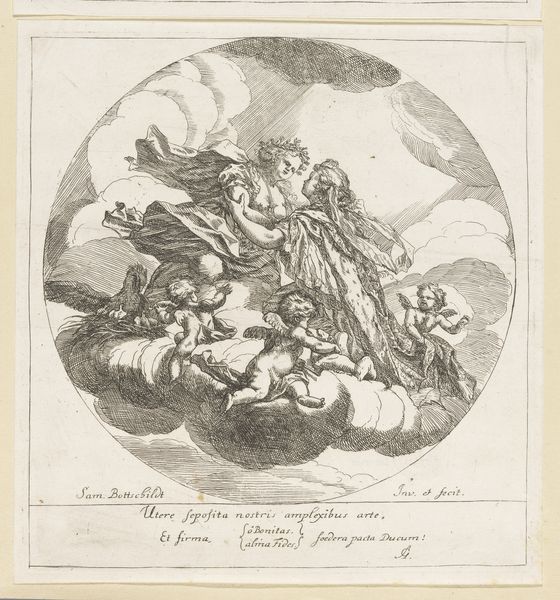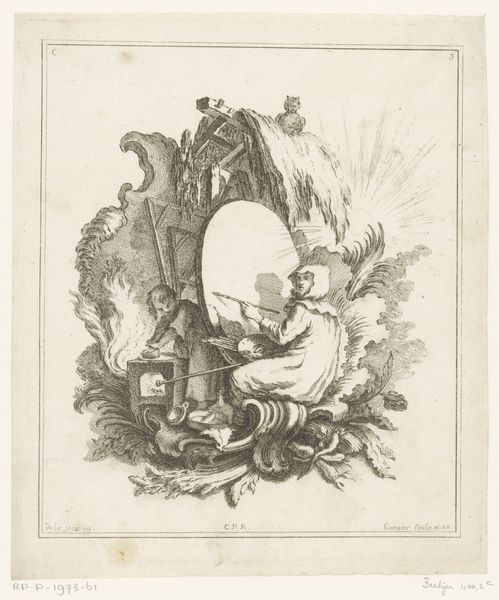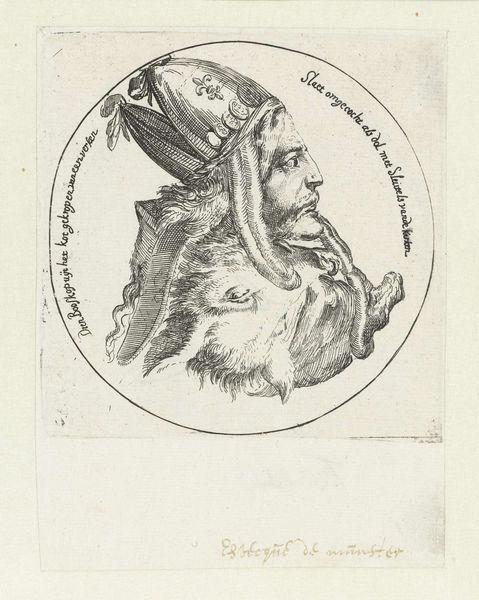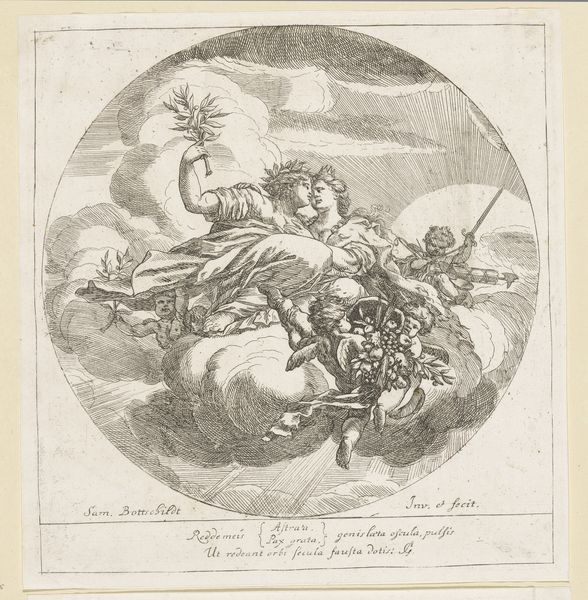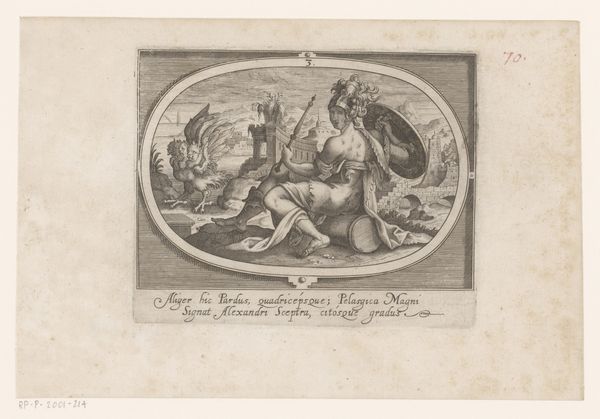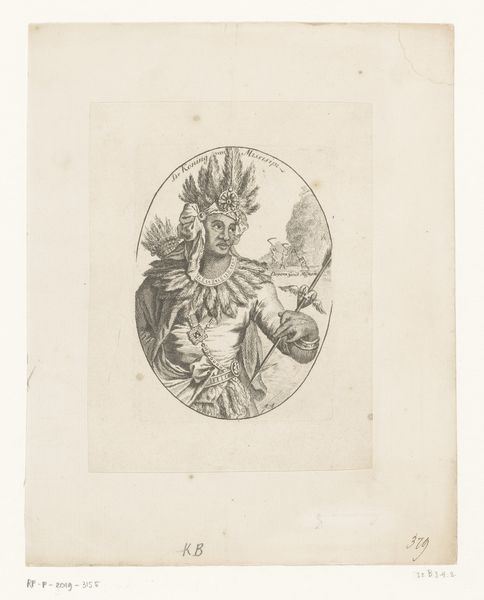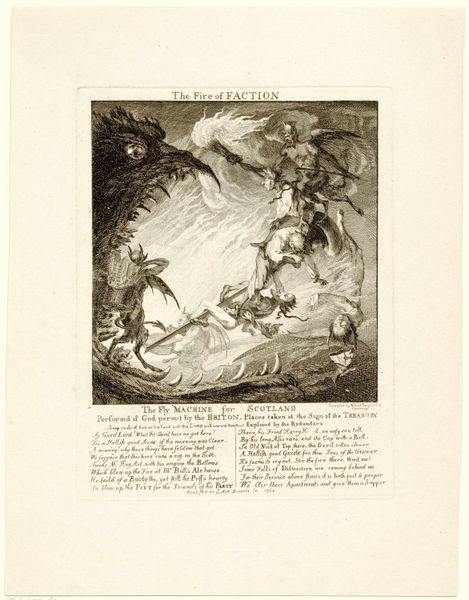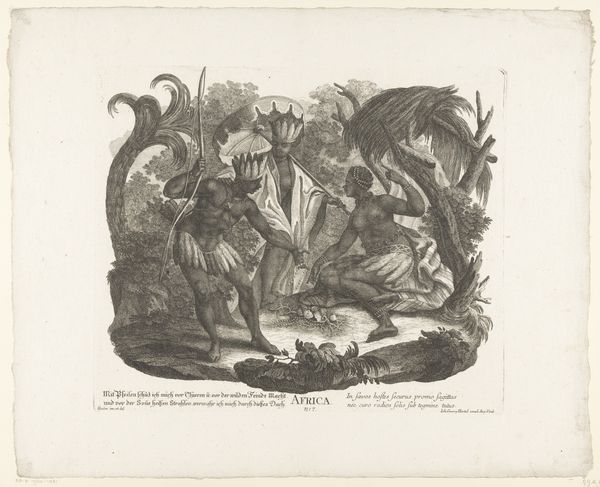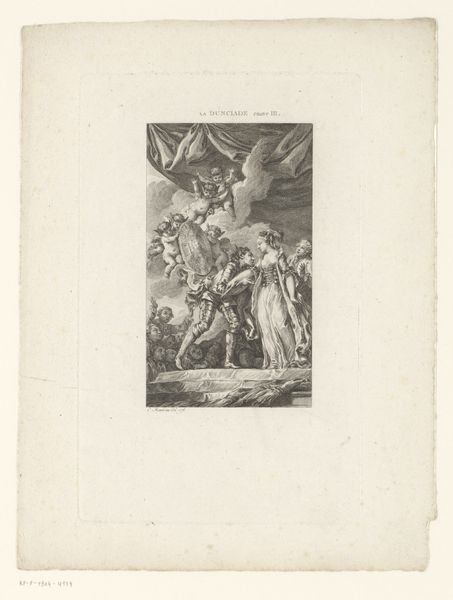
print, engraving
#
baroque
# print
#
old engraving style
#
personal sketchbook
#
decorative-art
#
engraving
Dimensions: height 197 mm, width 170 mm
Copyright: Rijks Museum: Open Domain
This round medallion was etched by Gerard de Lairesse sometime between 1641 and 1711. We see a dense arrangement of objects, each carefully rendered with distinct textures using only thin lines. De Lairesse employed etching, an intaglio printmaking technique that allowed for detailed work. It involves coating a metal plate with a waxy, acid-resistant substance, and then using a sharp needle to draw the design, exposing the metal beneath. The plate is then dipped in acid, which eats away at the exposed lines. The deeper the bite, the darker the line when printed. The image is of a trophy celebrating the four seasons. In its depiction of agrarian tools and produce, it speaks to the rhythms of rural labor and the cycles of consumption and abundance. Yet, the very material and technique used to create the image—metal, acid, and printing—reflect a burgeoning industrial landscape. This complex relationship between nature and industry, labor and leisure, makes the work all the more compelling.
Comments
No comments
Be the first to comment and join the conversation on the ultimate creative platform.
